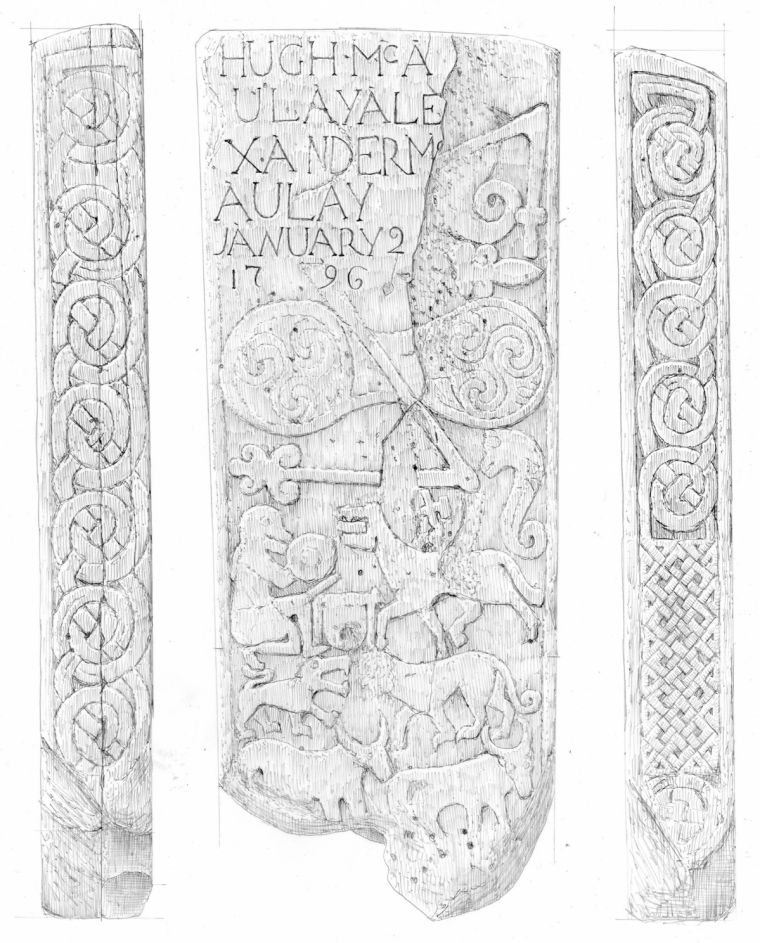Rare Pictish stone unearthed at early Christian site in Scotland

The discovery of an extremely rare carved Pictish stone at an early Christian site in northern Scotland has excited archaeologists.
The stone was unearthed by chance when Anne MacInnes, of the North of Scotland Archaeological Society (NOSAS), was surveying an early Christian site near Dingwall, north-west of Inverness.
Several mythical beasts were carved onto the surface of the stone, including a centaur with an axe, a hippocampus and an animal-headed warrior wielding a sword and shield.
Other carvings included a cauldron and two oxen. A double disc and Z-rod, two common Pictish symbols of unknown meaning, were also carved onto the stone.
Together with archaeologists from Highland Council and Historic Environment Scotland, the team has concluded that the stone represents two-thirds of a large decorative cross that may have originally stood nearly 2.5 metres high.
The slab was later re-purposed in the 18th century as a grave marker and has the year 1796 carved into the front.
NOSAS announced the find on their Facebook page and said it was an "exciting" discovery.
The stone has been removed from the site for conservation using donations from NOSAS and the Pictish Arts Society.
It is hoped that it will soon go on display to the public in a museum.
"The next stage is to raise funds for the conservation process," said NOSAS.
The Picts were a Celtic people group who lived in the eastern and northern regions of Scotland before disappearing from the historical records in around the 900s.

They were originally pagan but gradually converted to Christianity under the influence of missionaries from Ireland. Legend records Saint Columba of Iona subduing an intimidating creature in the River Ness on his way to convert the Pictish King Bridei in present-day Inverness, possibly the earliest record of the Loch Ness Monster.
The Picts were highly skilled in carving decorative stone and metal but only around 50 complete Pictish cross slabs have been found in Scotland, making this latest discovery one of national importance, the archaeologists said.
The reverse side of the Dingwall stone has yet to be analysed but the archaeologists expect that when they do, they will find a large ornate Christian cross.











